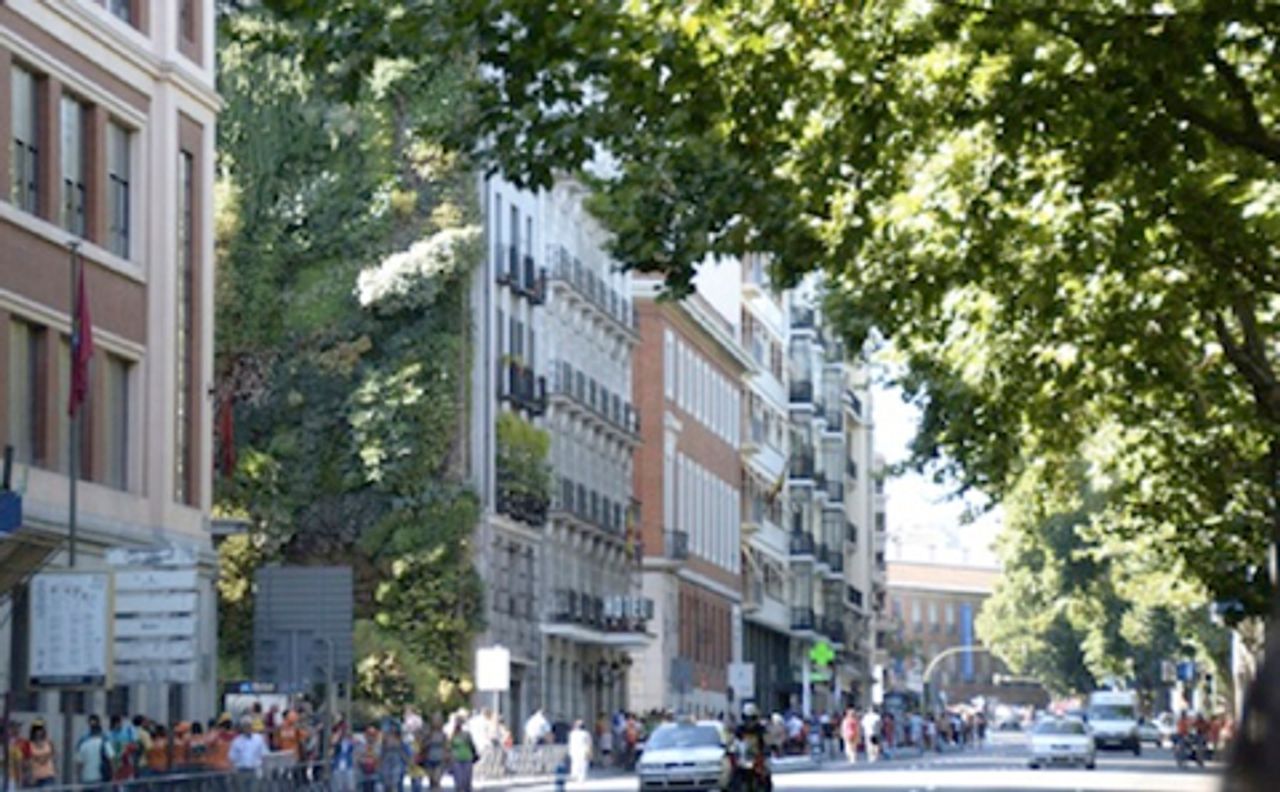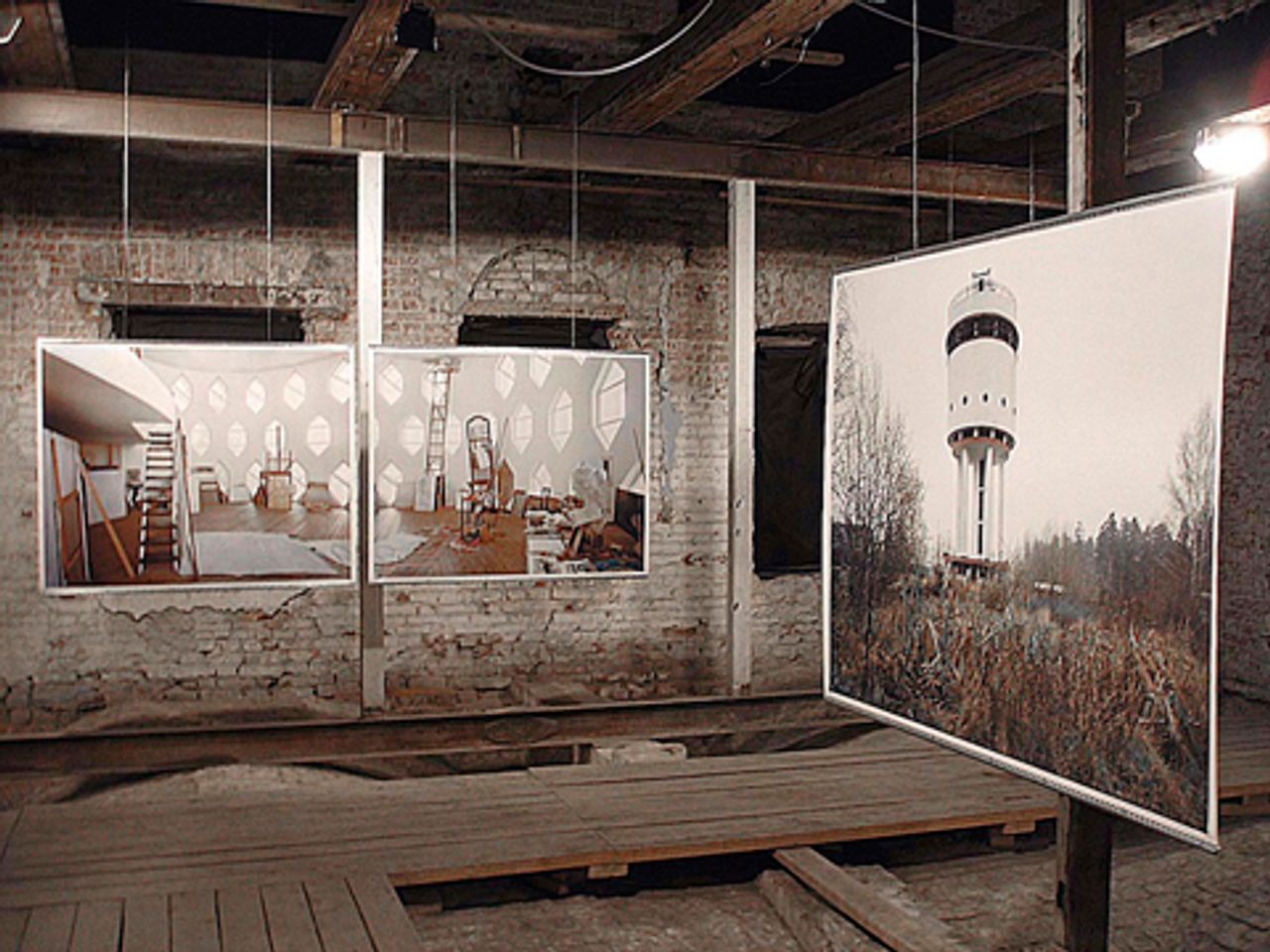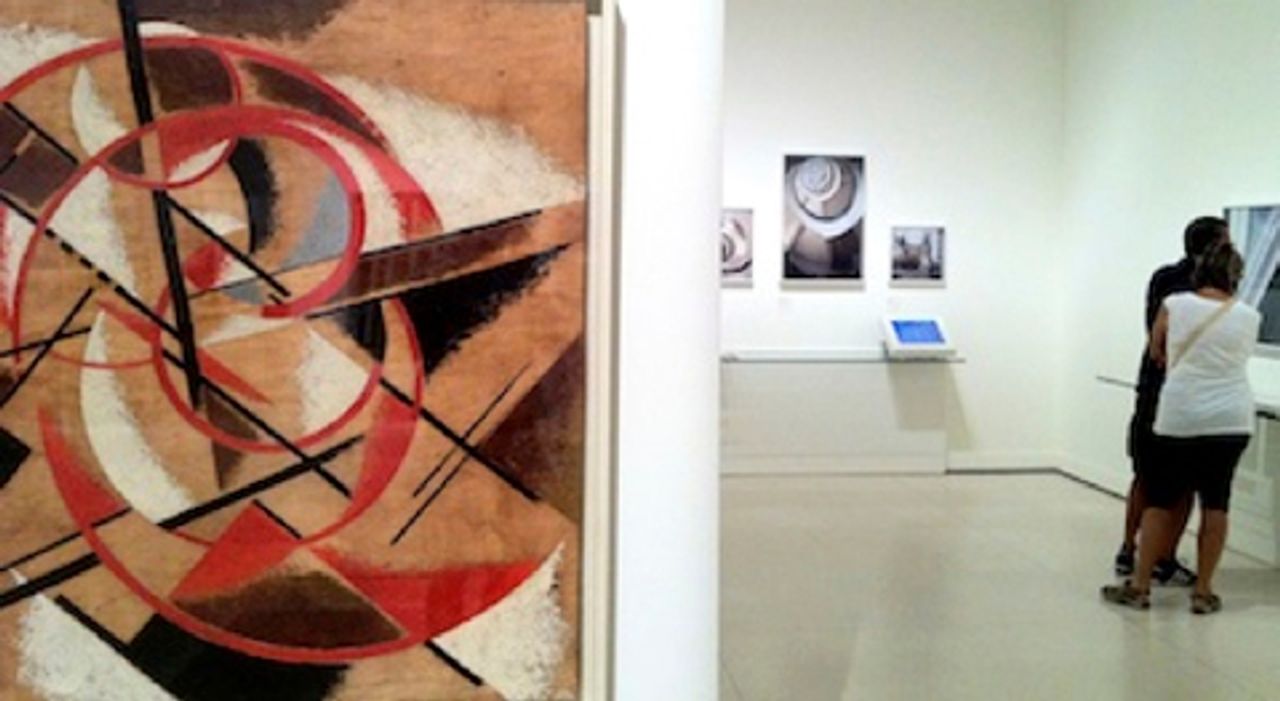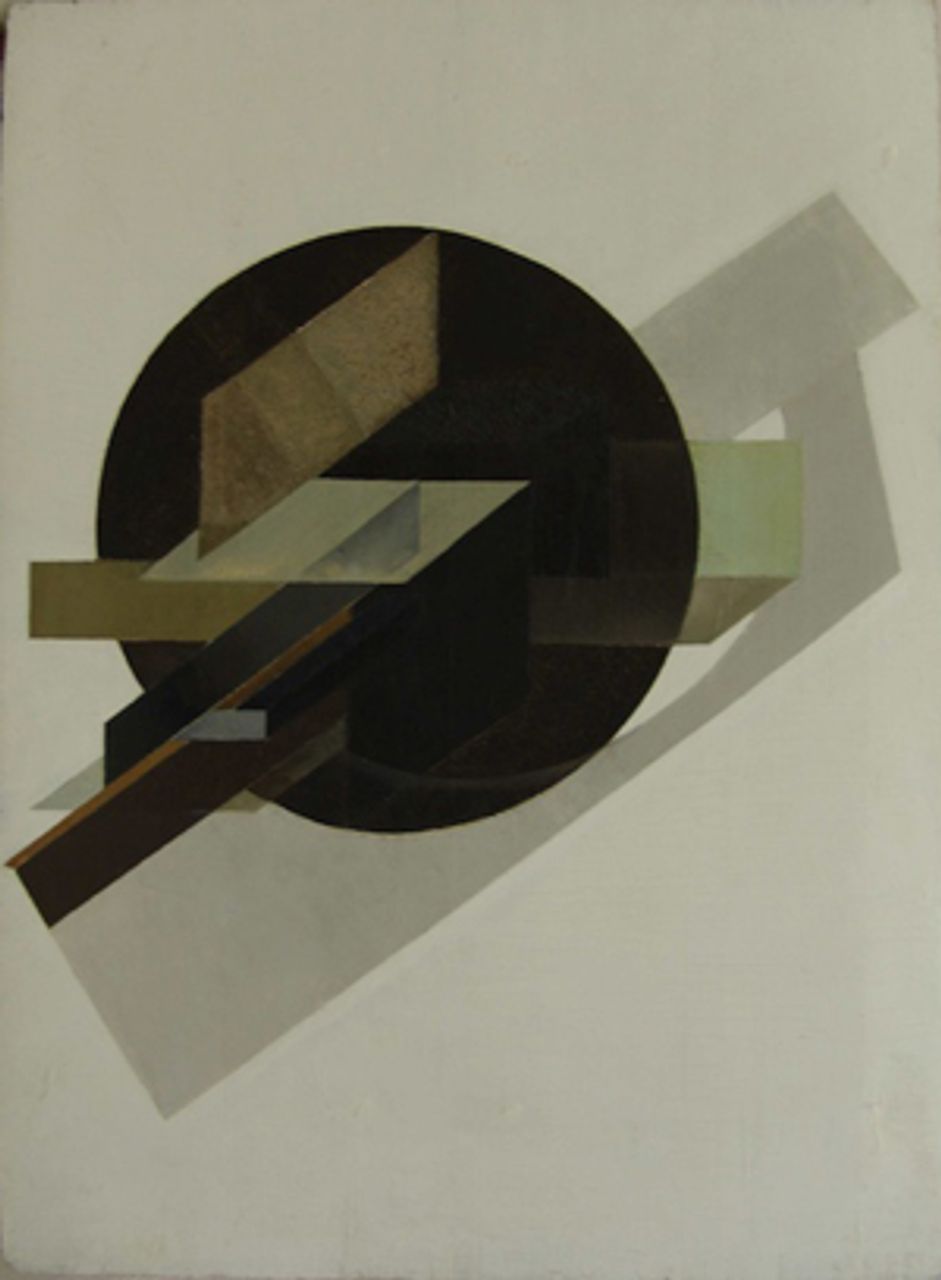Photographs, paintings, models and drawings, reflecting the work of artists, architects, engineers and photographers who were inspired by the Russian revolution of 1917, are on view at La Caixa Forum in Madrid, Spain until September 18.
The exhibition, entitled Building the Revolution, will then travel to the Royal Academy of Arts in London, where it will be on display from October to January, before moving on to the Gropius-Bau in Berlin.
Beginning in the spring of 2006 when a selection of large format prints of architectural photographer Richard Pare were first viewed at the Ruina annex of the Shchusev State Museum of Architecture (MUAR) in Moscow, these pictures have appeared in four countries on three continents. After nearly six years, their odyssey, now accompanied by a selection of small-scale, historic prints from the archive of MUAR and artworks from the Costakis Collection of the State Museum of Contemporary Art (SMCA) in Thessaloniki, Greece, is notable because few exhibits travel as long to sustained interest.
The setting in Madrid is dramatic. As we approached the museum from the south, along Paseo del Prado, a lush, green, garden loomed overhead, covering the side of a building along the edge of the small entrance plaza. The vertical vegetation of Patrick Blanc breaks the urban wall, while reflecting the Royal Botanic Gardens across the boulevard.
 The museum from the outside
The museum from the outsideThe renovation of an abandoned powerhouse by Jacques Herzog and Pierre de Meuron for the Caixa museum was completed in 2008. A few blocks north and uphill, one can enter the house where Miguel de Cervantes was born and died nearly 400 years ago. In this part of the city, buildings that are centuries old define narrow cobbled streets. From these tightly-packed structures, space for the entrance was literally excavated.
The architects saved the brick face of an old powerhouse, but they replaced the structural system with huge cantilevers and turned a traditional entrance inside out. We passed under a huge mass of the building as if entering a cave before ascending the asymmetrical, stainless-steel stair to the foyer.
 The museum staircase
The museum staircaseBy contrast, the core tower of stairs and elevators was formed with gently curving concrete with cream-colored terrazzo floors. Many novel features are beautifully executed in themselves, but the museum design as a whole seems somewhat undermined by the lack of a unified and coherent conception. The opposite is true of many of the works in the current exhibit, which have a singular intent that seems to challenge the technical resources that were available when they were built.
The curators for the exhibition are MaryAnne Stevens of the Royal Academy of Arts in London and Maria Tsantsanoglou of the SMCA, with the collaboration of Richard Pare. The catalogue is dedicated to the memory of David Sarkisyan (1947-2010). As director of the Shchusev Museum, Sarkisyan become an early supporter of Mr. Pare’s project to document the architecture of the creative decade that followed the revolution.
Ms. Tsantsanoglou was visiting Moscow in 2006 when Mr. Pare’s photographs were first shown. When she saw them, she suggested that the Shchusev archive must contain records of many of the same buildings, and that these would be valued companions to Mr. Pare’s images. Mr. Sarkisyan heartily agreed. The following year Pare’s photographs appeared at the Museum of Modern Art in New York.
 Richard Pare's prints in the Ruina, Shchusev State Museum of Architecture, Moscow, 2006
Richard Pare's prints in the Ruina, Shchusev State Museum of Architecture, Moscow, 2006When the SMCA had funds for an exhibition in 2008, Ms. Tsantsanoglou invited Mr. Sarkisyan to include archival photographs from MUAR. She also added artworks of the Costakis Collection which have a special relationship to the buildings on view.
George Costakis was a unique collector because “he collected everything,” she explained, “tiny sketches, bits of paper, old things discarded in the attic.” Some of these unusual objects contain the seeds of ideas which would later blossom into significant tendencies of the Soviet Avant-Garde. Such things had been difficult to exhibit, but “Richard’s photographs provided the perfect context.”
A two-sided panel near the entrance to the current exhibit offers visitors a sense of the effect of this approach to historical context. A tiny sketch (Cat. 1 View from My Window onto Houses, 1906) by Lyubov Popova occupies one side of a large panel. A founder of constructivism, Popova was a teacher, companion and collaborator of the architect Alexander Vesnin and set designer for Vsevelod Meyerhold, a major figure in experimental theatre. A set design for Meyerhold and several buildings by Vesnin also appear in the exhibit.
The daughter of a wealthy merchant, by 16 Popova was a practiced artist, having already trained with professionals for five years. Her conventional rendering of apartments along the Moscow River provides a telling prelude to the change which was about to occur. From a student of icon painting and urban landscape, she was about to become a forceful proponent of the new style.
Among the treasures on display just across the gallery is one of Popova’s—Spatial Force Construction series from 1920-21. The substrate is an icon board which has been transformed in every sense of the word.
 Spatial Force Contruction by Lyubov Popova
Spatial Force Contruction by Lyubov PopovaDuring 1920 the country was engulfed in civil war, as the Red Army drove the white forces of landlords and capitalists, backed by imperialist munitions and invading troops, off the land. Everything was scarce. The painter used a wooden panel, which had previously supported a religious icon and was probably salvaged from a church, and sanded the surface, leaving luminous birch wood and rusty nail holes exposed. Red, semi-circular strokes slice through the image in an expanding spiral, as if a scythe were clearing the historical landscape of a diminishing white residue.
The work seethes with the struggle to educate and explain.
For centuries the mass of the population had survived in forced backwardness under the czarist autocracy which was hailed and protected by the religious bigotry of the Orthodox Church. The revolution had created conditions to transform that. Popova was part of the section of the intelligentsia that embraced the revolution.
Her message is unmistakable. The materials and techniques of the old society should be used to liberate the population— spiritually, culturally and socially.
Just visible behind the painting is Richard Pare’s photograph of the circular stair in the Chekist Housing Scheme at Ekaterinburg. It employs a similar iconography of spiraling hammer and sickle, but with an increasingly opposite intent. The architects were Ivan Antonov, Veniamin Sokolov and Arsenii Tumbasov, working between 1929 and 1936.
By the late 1920’s, vast changes had occurred in world politics that had far-reaching implications for Soviet life. The German revolution had been aborted in 1923. The year 1926 saw the betrayal of the general strike in Britain, and by 1927 the growing influence of Stalinist policy in the Communist International produced a catastrophe in China. By the late 1920’s, when the Chekist Housing was under construction, the Left Opposition had been expelled from the Communist Party and preparations for mass purges were well under way.
The process was highly complex. Forms which had served as the images of liberation in Popova’s painting became the symbols of the machinery of state repression in the housing complex for the secret police. During the 1920’s, a growing bureaucracy was exerting its grip over the state and cultural life in general.
Forms which had been produced in the feverish debates between artists about their own role in the social revolution became the emblems of the repressive power of the state as it was being transformed into the principal instrument of counter-revolution. Compare Nikolai Tarabukin’s Static-dynamic, Planar and Volumetric Compositional Constructivity, from 1921, Catalog 31, to the Chekist housing scheme stairwell, from 1929-36 Catalog 77.5. The contradictions are intriguing. A lyrical spiral from the heady days at the end of the civil war became the gleaming symbol of the state machine.
Returning to the panel with Popova’s early sketch, we found on the opposite side, seven tiny drawings by Ivan Kliun from 1915 (Cat. 4.1-4.7). These are curious combinations of geometric objects suspended by a few threads. Kliun called them “three-dimensional constructions” or “flying sculptures.” None of the actual objects survive, but the sketches document the first examples of forms which have become ubiquitous, known as “mobiles.”
Similar images occur repeatedly in the period immediately before and immediately following the revolution. Included in the exhibit are several constructions by Alexander Rodchenko (Cat. 9, 40.2), El Lissitsky’s Sketch for Proun 6B from 1920-21(Cat. 14) and “Dynamic City” by Gustav Klutsis, 1919-21(Cat. 12). In each case a beautifully-balanced geometric composition glides through space. Often the image is planetary, and the impulse is unmistakable. Horrified by the world, but seemingly incapable of changing it, the artist imagines a better one, beautifully-balanced and peaceful.
 Dynamic City, Gustav Klutsis, 1919-1921. Cat 12
Dynamic City, Gustav Klutsis, 1919-1921. Cat 12 Architects Mamen Domingo and Ernest Ferré referred to this idea in devising a system to display the art. To catch a sense of the social tensions and soaring aspirations of the period, they suspended panels on twisted steel cables held taught between beams in the ceiling and steel plates on the floor.
In the mid-1920’s when the soviet state was able to apply some resources to construction, some themes from the avant-garde resonated with the architectural program. In another article, we will review some of those buildings.
